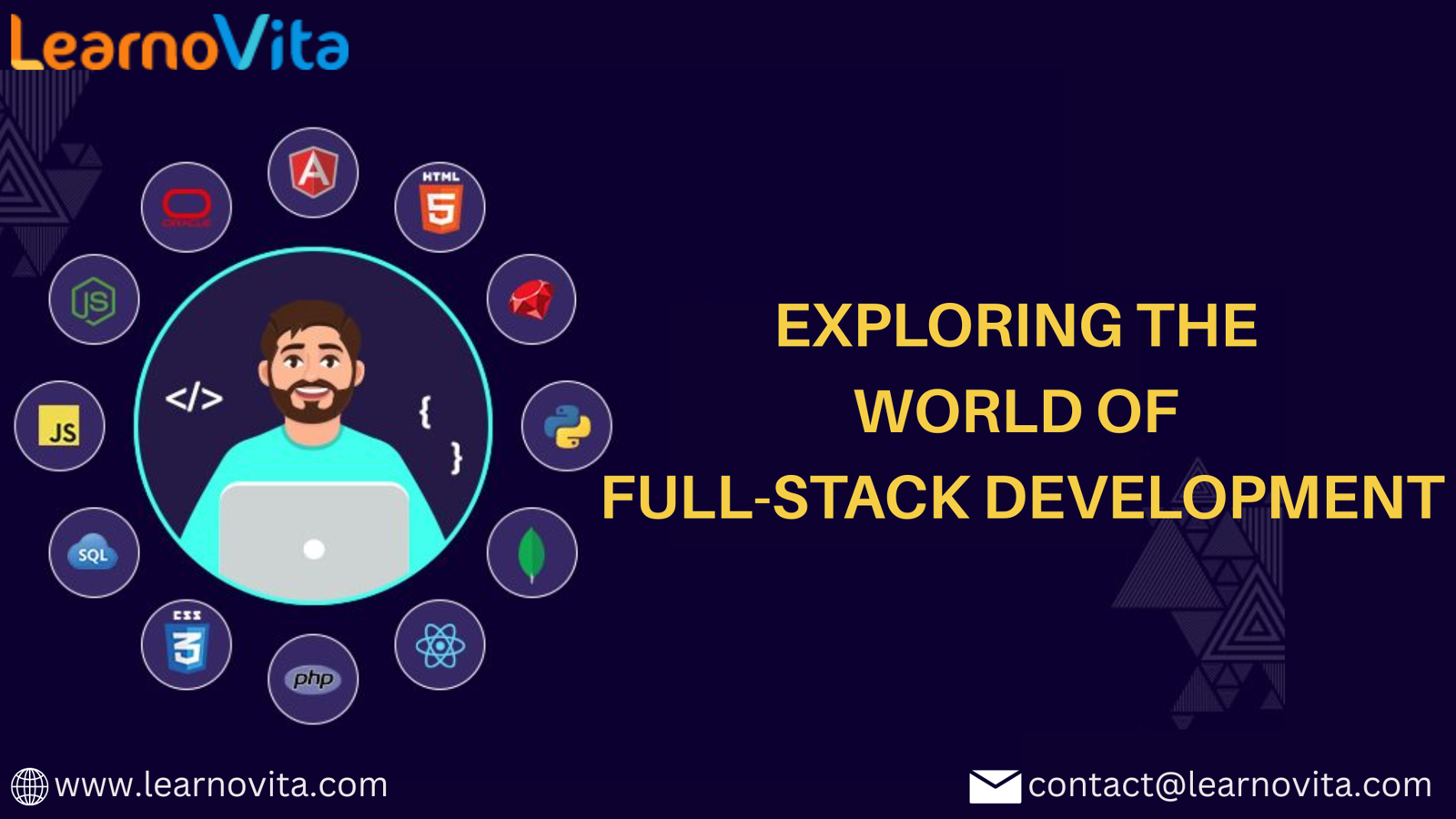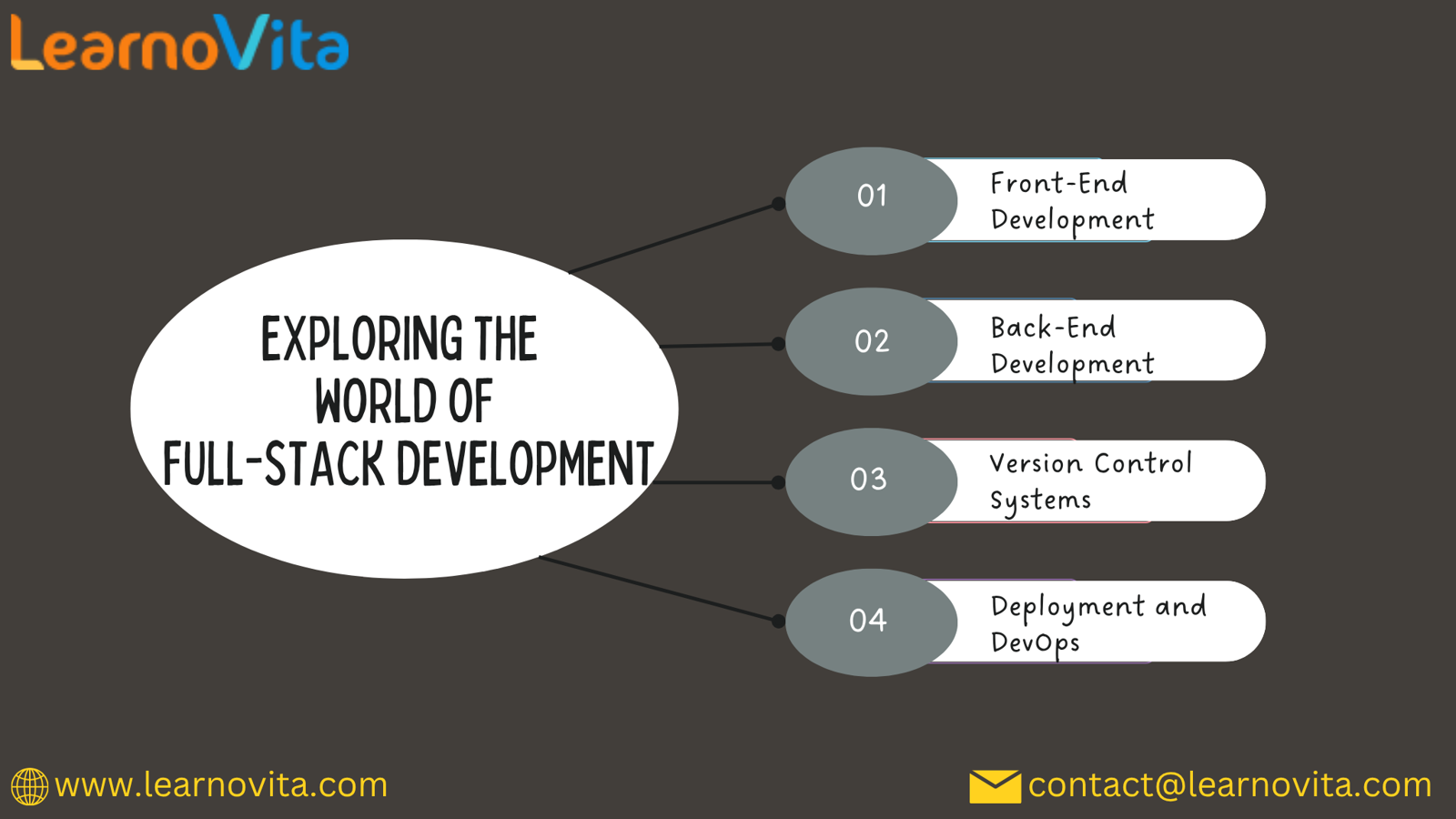Navigating the Realm of Full-Stack Development
In the fast-paced world of web development, full-stack development has become a crucial skill set that integrates both front-end and back-end technologies. As organizations increasingly seek adaptable developers who can manage every aspect of application creation, grasping the full-stack development process is essential. This blog aims to delve into what full-stack development encompasses, its importance, and the fundamental components that define this unique field.
If you want to excel in this career path, then it is recommended that you upgrade your skills and knowledge regularly with the latest Full Stack Developer Online Training.

What is Full-Stack Development?
Full-stack development refers to the ability to work on both the client-side (front-end) and server-side (back-end) of web applications. A full-stack developer possesses a diverse skill set that enables them to build complete applications from inception to deployment. This role includes everything from crafting user interfaces to overseeing databases and server functionality.
Why is Full-Stack Development Essential?
- Versatility: Full-stack developers can handle both front-end and back-end tasks, making them invaluable team members.
- Improved Collaboration: With expertise in the entire development spectrum, full-stack developers enhance communication between designers and back-end engineers.
- Cost-Effectiveness: Companies benefit from hiring full-stack developers who can take on multiple roles, reducing the need for specialized teams.
Key Components of Full-Stack Development
Full-stack development consists of several core components that work together to create a unified application.
1. Front-End Development
Front-end development revolves around the visual elements of a web application—the part that users engage with directly. This includes layout, design, and overall user experience.
Technologies Involved:
- HTML: The foundational markup language used for creating web pages.
- CSS: Employed for styling and layout to enhance the visual appeal of applications.
- JavaScript: A programming language that introduces interactivity and dynamic features to websites.
- Frameworks: Tools like React, Angular, and Vue.js facilitate the building of complex user interfaces.
2. Back-End Development
Back-end development focuses on the server-side of applications, managing databases and application logic. This ensures that everything operates smoothly behind the scenes.
Technologies Involved:
- Languages: Commonly used programming languages include Node.js, Python, Ruby, Java, and PHP.
- Frameworks: Frameworks such as Express.js (Node.js), Django (Python), and Ruby on Rails help streamline back-end development.
- Databases: Full-stack developers often work with both SQL (e.g., MySQL, PostgreSQL) and NoSQL (e.g., MongoDB) databases for effective data management.

With the aid of Best Software Training Institute programs, which offer comprehensive training and job placement support to anyone looking to develop their talents, it’s easier to learn this tool and advance your career.
3. Version Control Systems
Version control systems are vital for tracking changes to code, especially in collaborative settings. They help monitor code modifications and allow developers to revert to earlier versions when necessary.
Key Tool:
- Git: The most widely adopted version control system, often integrated with platforms like GitHub for collaborative projects.
4. Deployment and DevOps
Deployment involves transitioning applications from development to production, making them accessible to users. DevOps practices enhance this process, ensuring efficient deployment and maintainability.
Tools and Platforms:
- Cloud Services: Platforms like AWS, Azure, and Heroku simplify the hosting and deployment process.
- Containerization: Tools such as Docker enable developers to package applications along with their dependencies, ensuring consistency across environments.
Conclusion
Navigating the realm of full-stack development uncovers a dynamic and multifaceted discipline that combines various technologies and skills. By mastering both front-end and back-end components, developers can create comprehensive web applications that satisfy user needs and business objectives. As the demand for skilled full-stack developers continues to rise, embracing this holistic approach to web development opens the door to exciting career opportunities. Whether you're just beginning or looking to expand your expertise, full-stack development offers a fulfilling path in the tech industry.
- Art
- Causes
- Crafts
- Dance
- Drinks
- Film
- Fitness
- Food
- Jogos
- Gardening
- Health
- Início
- Literature
- Music
- Networking
- Outro
- Party
- Religion
- Shopping
- Sports
- Theater
- Wellness



